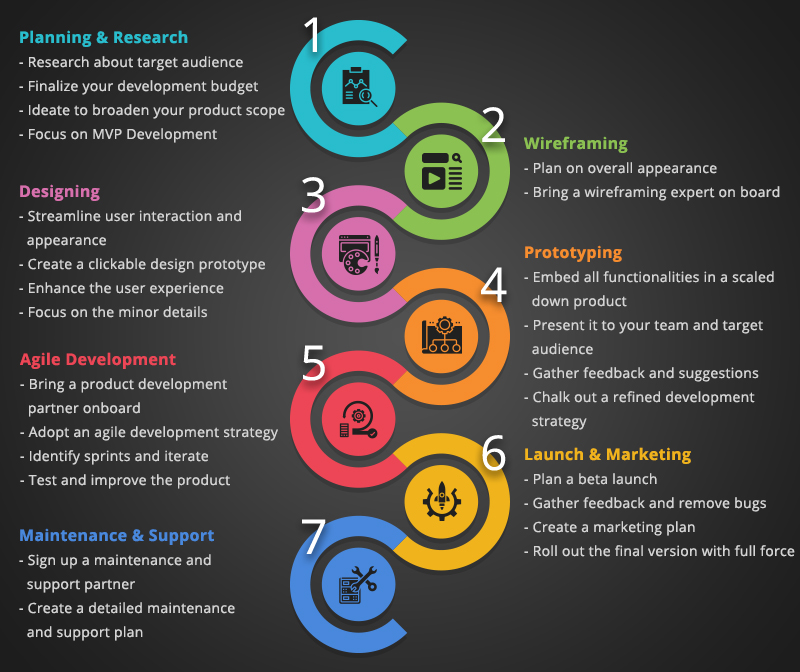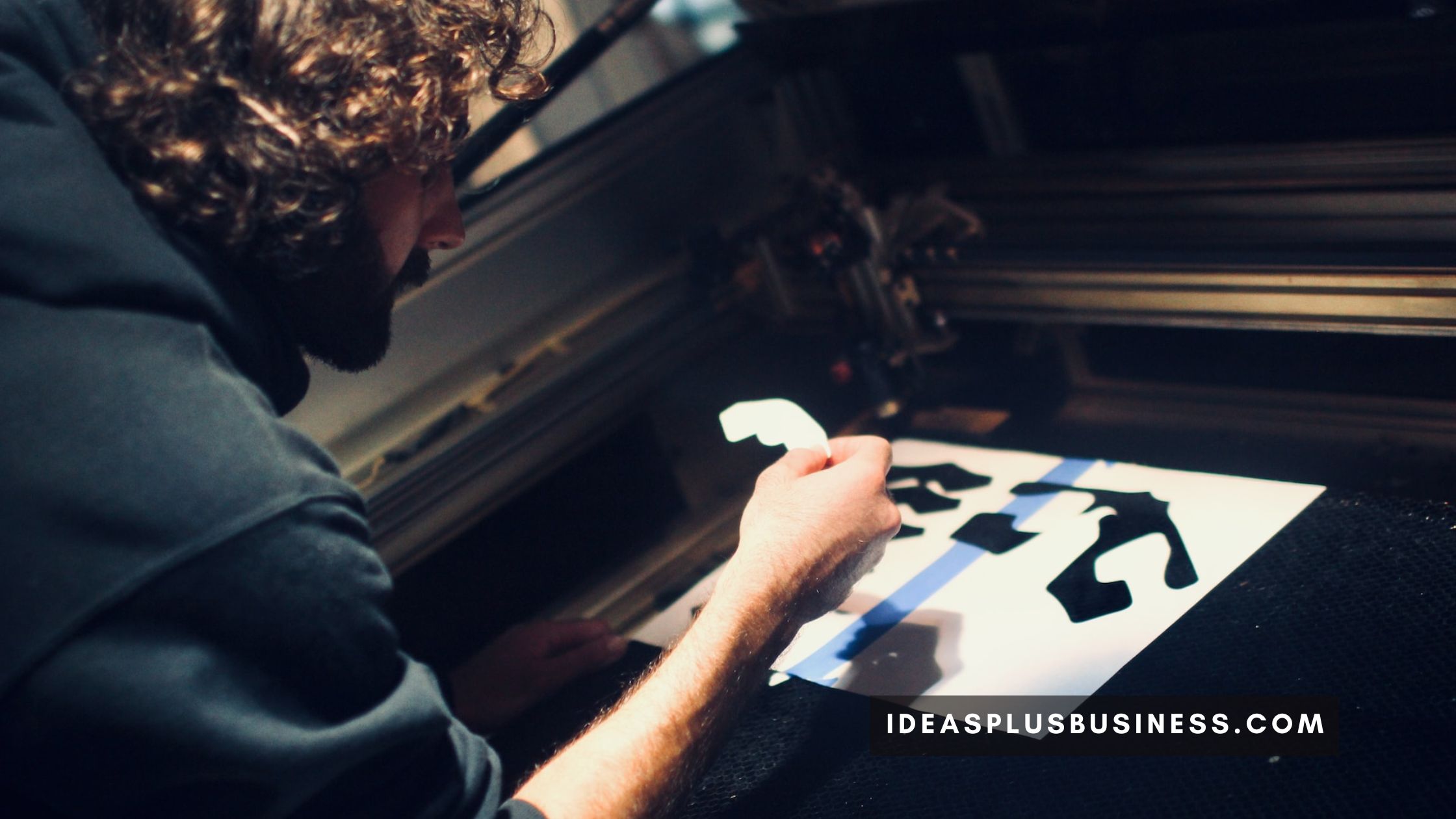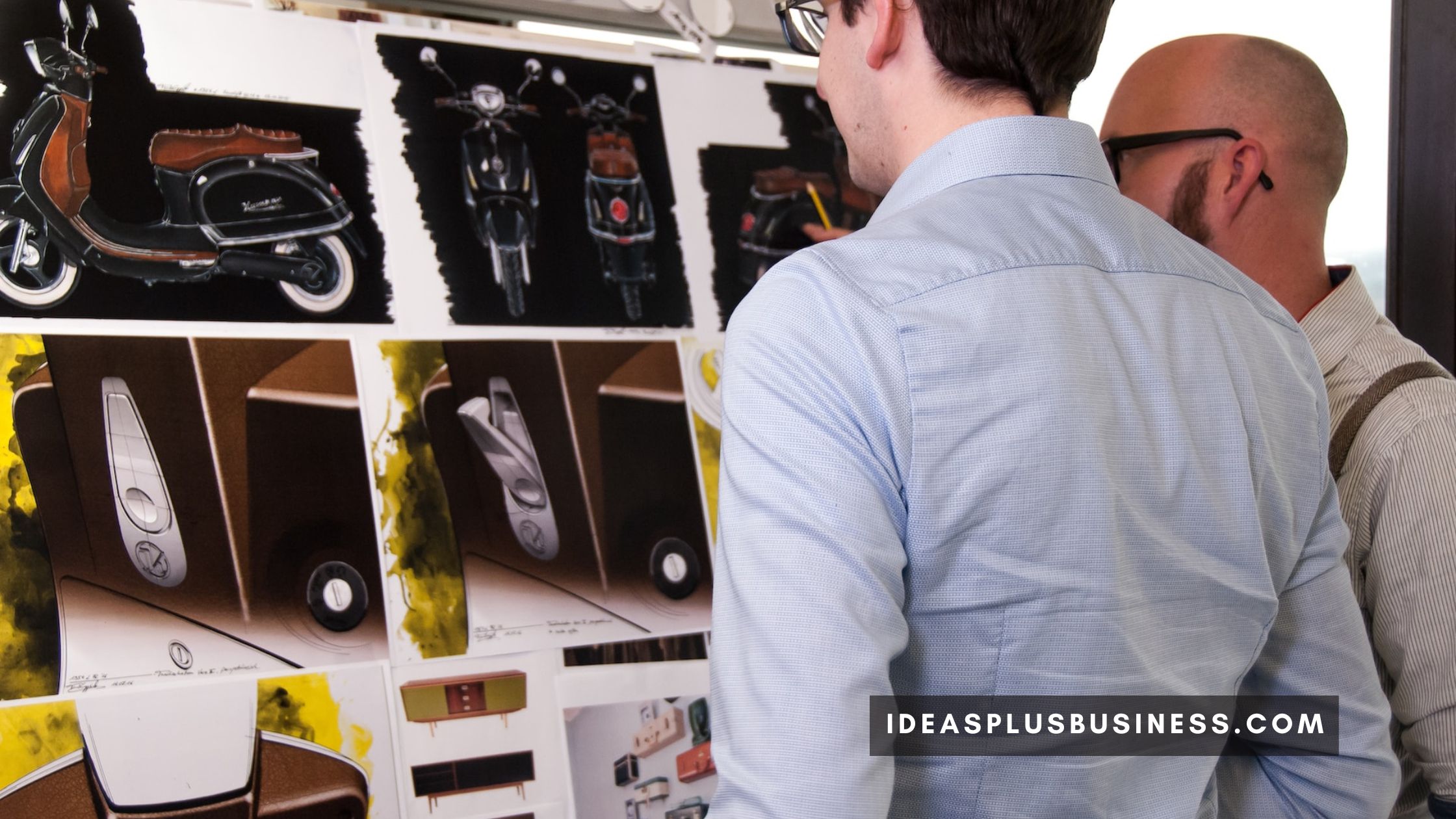Digital products are everywhere nowadays. Nearly every startup is focusing on the digital product development process to solve a customer problem, launch a new service, or delight more customers than before.
Digital product development services help startups and entrepreneurs create efficient, scalable, and effective digital solutions based on their growth goals.
This article will help you understand the seven phases of the digital product development process in the modern era.
The anatomy of a digital product
Digital products dominate the modern world like no other innovation in human history.
From chatbots to cab-hailing apps, and food ordering services to SaaS platforms, nearly everything that is packaged in the form of software or an app is a digital product. Digital products are a step ahead of conventional websites where the goal is to inform alone.
Now, digital products are all about solving real-life problems using technology. In short, everything that serves you is a digital product.
What are the 7 stages of a new product development process?
Here are the seven stages of a new product development process:
1. Planning and Research
- Research your target audience.
- Finalize your development budget.
- Ideate to broaden your product scope.
- Focus on MVP development.
2. Wireframing
- Plan on overall appearance.
- Bring a wireframing expert on board.
3. Designing
- Streamline user interaction and appearance.
- Create a clickable design prototype.
- Enhance the user experience.
- Focus on the minor details.
4. Prototyping
- Embed all functionalities in a scaled-down product.
- Present it to your team and target audience.
- Gather feedback and suggestions.
- Chalk out a refined development strategy.
5. Agile Development
- Bring a product development partner on board.
- Adopt an agile development strategy.
- Identify sprints and iterate.
- Test and improve the product.
6. Launch and Marketing
- Plan a beta launch.
- Gather feedback and remove bugs.
- Create a marketing plan.
- Roll out the final version with full force.
7. Maintenance and Support
- Sign up for a maintenance and support partner.
- Create a detailed maintenance and support plan.

What are the stages of digital product development?
Any modern software product development company would reinstate the fact that a phase-wise development approach is pertinent to the success of a digital product.
But how should one move ahead with the digital product development process? Here are the stages of digital product development you should follow while developing your new digital product:
Stage 1: Research, Analysis, and Planning
This is the most important step in your entire product development lifecycle. Planning is the key to your success, whether you are planning to launch artificial intelligence services or an innovative mobile app.
Without proper research and planning, you will end up wasting time, effort, and money on something you never wished to focus on.
This step would give you clarity on the fact if you should proceed with digital product development. At this step, you should focus on a solution-based approach where you should:
- Understand the user requirements through intensive market research.
- Ideate with a broad perspective to expand the scope of your digital product.
- Finalize your product development budget to eliminate chances of overspending.
- Focus on perfecting a minimal viable product (MVP) before you exhaust all your resources on non-important features, early on.
Stage 2: Start with Wireframing and Sketching
The planning phase would help you clear out your head and create a streamlined path toward product development.
Once you have a solid plan, you should focus on how your digital product should appear.
If you are working with a software product development company, you should ask for their expert advice on mastering the preliminary wireframes for your digital product.
Stage 3: Designing
When you are this deep in the product engineering process, it is time to start thinking about how your product should look and feel.
The design phase would give you an idea about how your product would appear and interact with real users. The key here is to develop an intuitive interface that simplifies the workflow and makes it easier for users to get the most out of your product.
The best way to perfect the design part is to focus on creating a clickable prototype that showcases how your digital product would function on different devices.
For the best user experience, you would need to focus on minor details: animations, transitions, menu appearances, and other small elements within the software, app, or digital product.
Stage 4: Prototyping
A critical part of the product engineering and development lifecycle is prototyping. The prototype is a highly scaled-down version of the actual product with the bare minimum features.
The goal of creating a prototype is to analyze and test how your target audience will respond to your product. This phase can merge with the MVP development process and focuses more on functionality than design.
If you are using third-party product development services, you should ask for a functional prototype that you can ask real users to use and provide feedback. Based on this preliminary feedback, you can make iterations to your existing product development approach.

Stage 5: Agile Development
This phase essentially kickstarts the coding activity. When you are thinking about fresh product development, try to engage with a team that adopts an agile approach to development.
This would help in making real-time adjustments to your product and accelerate the process of product evolution.
Agile development methodology gives a product owner more control over the end result and results in higher development productivity and better value for end-users. Additionally, considering software development nearshore staff augmentation can be an agile solution, enabling your team to scale up or down as needed, ensuring your project stays on track and within budget while maintaining flexibility.
The entire product development process will be broken down into sprints where routine testing and iterations will promise the best performance and results.
Stage 6: Launch and Marketing
With the completion of the product development phase, you will be ready to present your product to the real users.
The most important part of your launch process should be to have an effective marketing and launch strategy. This would help you avoid last-minute goof-ups and get maximum traction from the launch activity.
Here are a few tips to effectively launch your digital product:
- Go for a soft/beta product launch before a full-scale rollout to identify and eliminate bugs.
- Never overpromise and underdeliver. It is better to keep a low profile till the time you are confident.
- Have a clear marketing and communication plan with clear target personas.
Stage7: Maintenance and Support
After you are successful with your launch, don’t just lean back. Instead, create a proper maintenance and support plan for your digital product.
Brainstorm with your product development partner to draft a long-term service level agreement (SLA) for maintenance and support. This will help you keep your digital product free from bugs throughout the product journey.
You can hire a digital product development company with credibility and experience in maintaining apps, software, and other digital products.

Conclusion
Building a product from scratch is a tough ordeal for any startup. By bringing an experienced software product development company on board, the process of new product development can improve phenomenally.
Before you choose to do anything with your product idea, it is better to contact developers who can guide you through various phases and suggest the best course of action for new product development.
I’m Namee, a digital marketer working for Azilen Technologies. I’m also passionate about exploring and writing about innovation, technology including AI, IOT, Big Data, and HR Tech.

